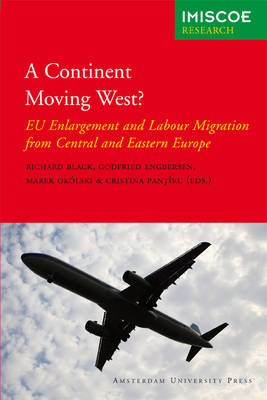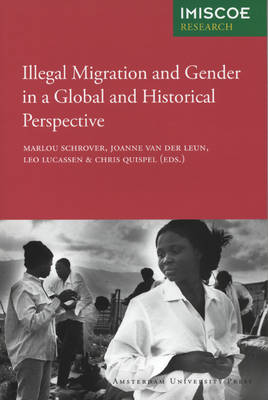IMISCOE Research
3 total works
Why do some migrants integrate quickly, while others become long-term minorities? What is the role of the state in the settlement process? To what extent are experiences in the past different from the present? Are the recent migrants really integrating in another way than those in the past? Is Islam indeed an obstacle to integration? These are some of the burning questions, which dominate the current politicized debate on immigration in Western Europe. In this book, leading historians and social scientists analyze and compare a variety of settlement processes in past and present migration to Western Europe. Identifying general factors in the process of adaptation of new immigrants, the contributors trace social changes effected by recent European immigration, and the parallels with the great American migration of the 1880s-1920s. The history of migration to Western Europe and the way these migrants found their place in the receiving societies, is not only essential to understand the way nations deal with newcomers in the present, but also constitutes a highly interesting laboratory for different paths of integration now and then. By analyzing and comparing a wealth of settlement processes both in the past and in the present this book is both a bold interdisciplinary endeavor, and at the same time the first attempt to identify general factors underlying the way migrants adapt to their new surroundings, as well as how societies change under the influence of immigration. The chapters in the book both look at specific groups in various periods, but also analyses the structure of the state, churches unions and other important organized actors in Western European nation states. Moreover, the results are embedded in the more theoretical American literature on the comparison of old and new migrants. All chapters have an explicit comparative perspective, either by comparing different groups or different periods, whereas the general conclusion ties together the various outcomes in a systematic way, highlighting the main answers to the central questions about the various outcomes of settlement processes.
A Continent Moving West? explores the expansion of migration from countries in Eastern Europe following their accession to the European Union. Fifteen expertly authored chapters address head-on what the consequences of large-scale migration have been since 2007. The analysis is conducted for both origin countries, notably Poland, Romania and Bulgaria, and destination countries, including the UK, the Netherlands and Norway. Particular attention is given to labour market impacts, while also discussing migration policies emerging throughout the continent. Overall, this book testifies to how many of the migration patterns so far generated are temporary, circular or seasonal, thus warranting the label 'incomplete' or 'liquid'. Yet, the fluid nature of such movements is expected to continue, making forecasts for future migration - and its repercussions - highly unreliable. One thing is clear: conventional notions of migration as a one-way, permanent or long-term process are increasingly becoming wide of the mark. Editors Marta Anacka, Richard Black, Venelin Boshnakov, Krisztina Csedo, Jan de Boom, Stephen Drinkwater, John Eade, Godfried Engbersen, Jon Horgen Friberg, Michal Garapich, Izabela Grabowska-Lusinska, Pawel Kaczmarczyk, Eugenia Markova, Vesselin Mintchev, Joanna Napierala, Krzysztof Nowaczek, Wolfgang Ochel, Marek Ok�lski, Cristina Pant�ru, Swanie Potot, Dumitru Sandu, Erik Snel, Paulina Trevena.
Illegal Migration and Gender in a Global and Historical Perspective
by Chris Quispel, Marlou Schrover, Joanne van der Leun, Leo Lucassen, and A. M. Luijben
Published 3 December 2008
Two issues come to the fore in current debates over migration: illegal migration and the role of gender in illegal migration. This incisive study combines the two subjects and views the migration scholarship through the lens of the gender perspective, investigating definitions of citizenship and the differences in mechanisms of inclusion and exclusion for men and women, producing a comprehensive account of illegal migration in Germany, the Netherlands, Great Britain, the Soviet Union, Mexico, Malaysia, the Horn of Africa and the Middle East over the nineteenth- and the twentieth centuries.


